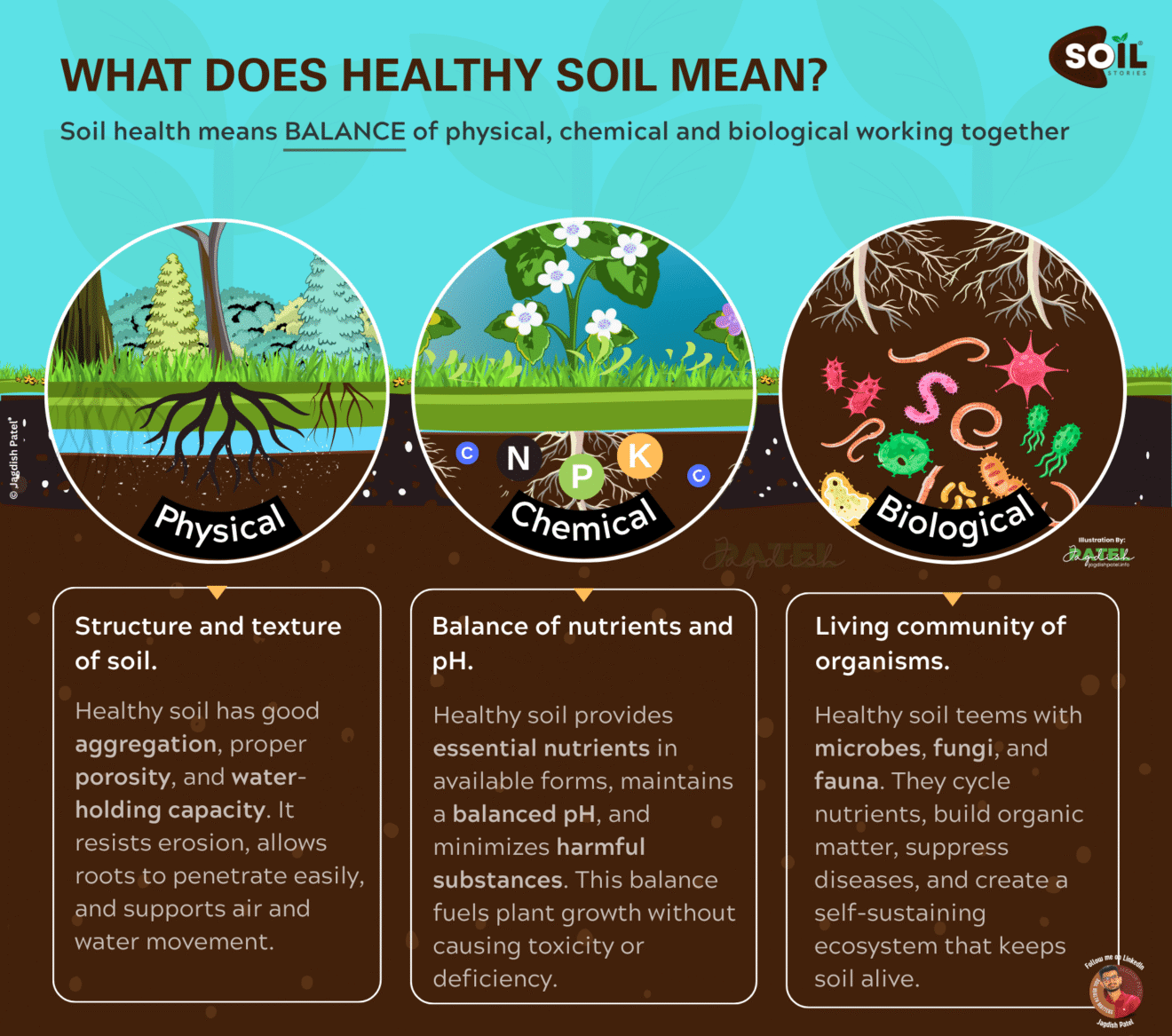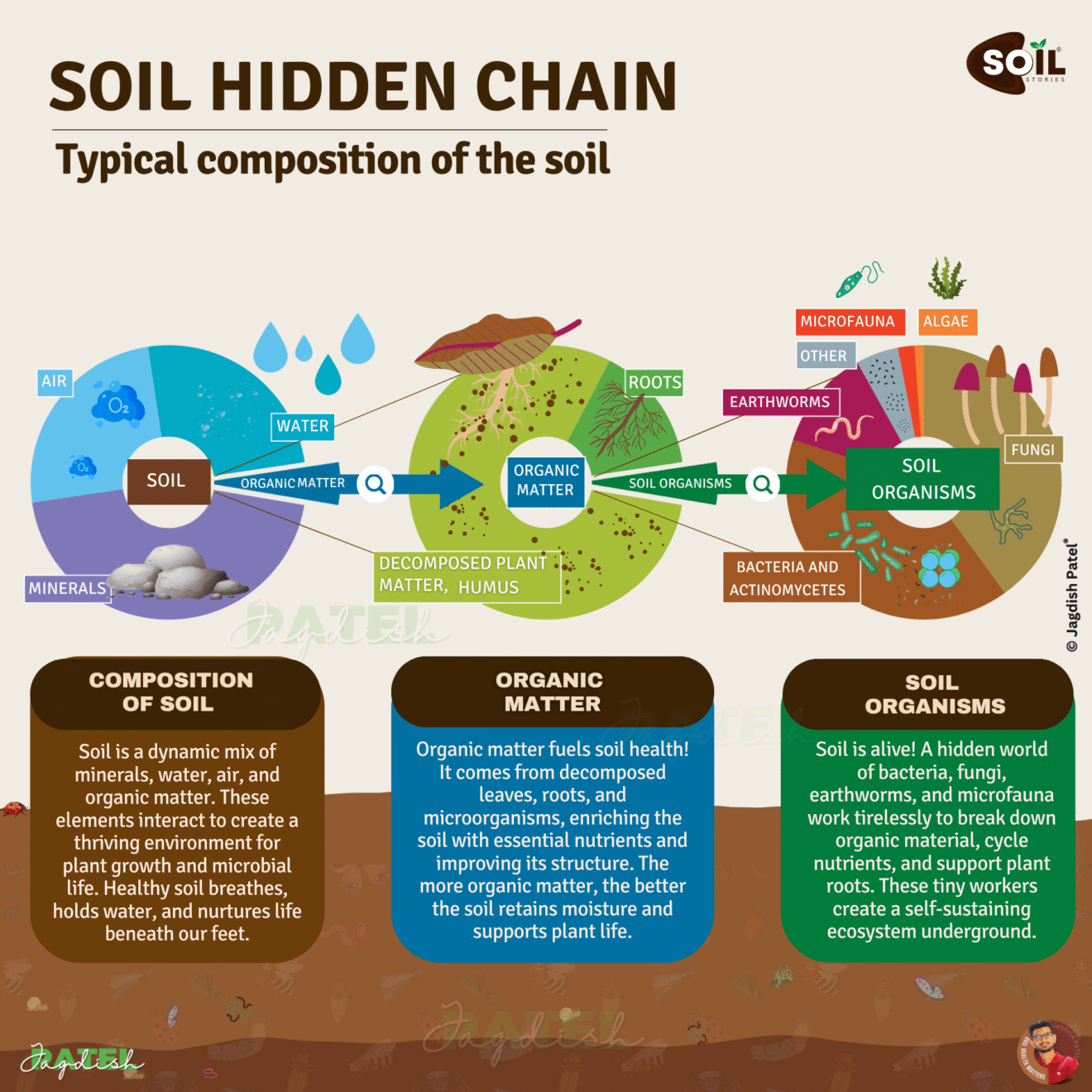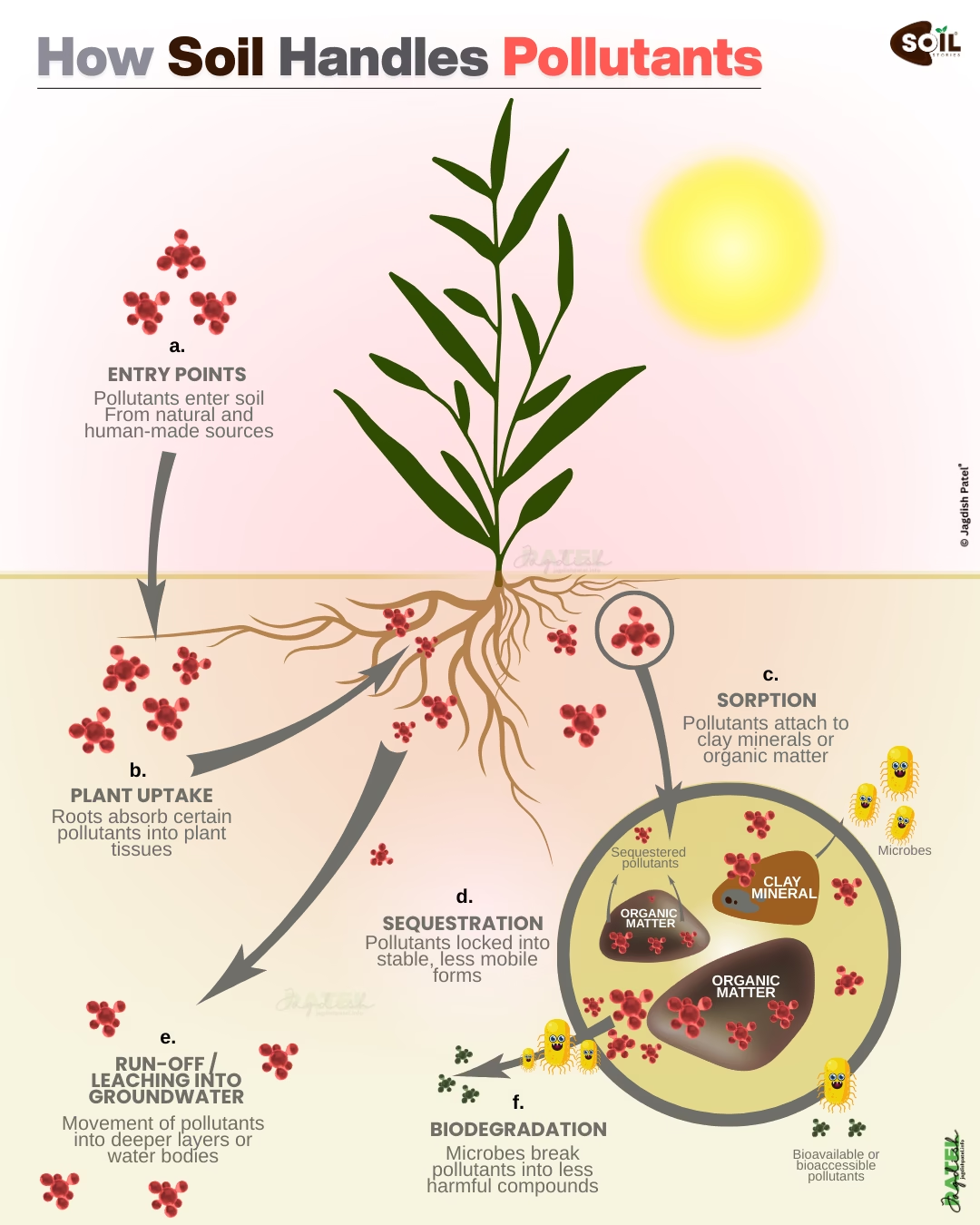Fertilizer phosphorus management is one of agriculture’s biggest hidden challenges. Farmers spend billions annually on phosphorus fertilizers, yet only a fraction actually feeds their crops. The uncomfortable truth? 75-85% of applied phosphorus becomes unavailable in the first year alone.
This isn’t a farming myth, it’s soil chemistry. Understanding where your phosphorus disappears helps you reclaim it, reduce costs, and protect our waterways. As the foundation of sustainable agriculture, soil biodiversity plays a critical role in how nutrients cycle through the system.
But there’s another layer to this problem: the global phosphorus crisis. The phosphorus we’re wasting comes from finite mineral deposits being depleted at an alarming rate, with environmental and geopolitical consequences that few farmers understand.
The Phosphorus Mystery: Where Does It Go?
Immediate Reactions: What Happens Within Hours
When phosphorus fertilizer hits the soil, rapid chemical reactions begin:
1. Dissolution
The fertilizer dissolves, releasing phosphate ions into the soil solution where roots can theoretically access them.
2. Root Uptake (The Hopeful 15-25%)
Plants absorb a small fraction, typically 15-25% in the first year, for essential functions like:
- Energy transfer (ATP production)
- Root development
- Flowering and seed formation
- Disease resistance
3. Chemical Fixation (The Silent Thief)
This is where most phosphorus vanishes: 40-70% becomes chemically “fixed” or locked in soil minerals within hours to days. This fixation process is directly influenced by soil pH and nutrient availability, making pH management critical for phosphorus cycling.

The Phosphorus Prison: Why Soil Holds Onto Phosphorus
Acidic and Alkaline Soils
In acidic soils (pH < 6.5), phosphorus binds with iron and aluminum oxides. In alkaline soils (pH > 7.5), it forms insoluble calcium phosphates. Both conditions lock phosphorus away for years.
Understanding soil pH and phosphorus relationship is essential to preventing this trap. Optimal pH (6.0-6.8) can maximize phosphorus availability.
| Soil Condition | Primary Binder | Fixation Strength | Recovery Time |
|---|---|---|---|
| Acidic (pH < 6.5) | Iron and Aluminum | Very Strong | 5-10+ years |
| Neutral (pH 6.5-7.5) | Moderate fixation | Moderate | 2-5 years |
| Alkaline (pH > 7.5) | Calcium | Strong | 3-7 years |
The Complete Phosphorus Budget: By The Numbers
Understanding where your phosphorus dollar goes reveals the true cost of inefficient fertilizer phosphorus management:
- Plant uptake: 15-25% — What actually feeds your crop
- Fixed in soil minerals: 40-70% — Locked away long-term
- Bound to soil particles: 10-20% — Slowly available
- Microbial biomass: 5-10% — Cycling through soil organisms
- Lost to runoff: 5-15% — Environmental damage
This problem intensifies when soil experiences degradation, as discussed in our article on restoring soil memory and reviving soil biology. Additionally, the excess nutrient cycling impacts how farming and climate change are interconnected, as overuse of synthetic fertilizers increases agricultural emissions.
Rock Phosphate and the Global Mining Crisis
The Depletion Crisis
Rock phosphate is the raw material behind virtually all commercial phosphorus fertilizers. The numbers are stark:
Current Global Situation:
- 270 million tonnes of rock phosphate mined annually
- Estimated recoverable reserves: 70-100 years at current extraction rates
- Top 5 producing countries: Morocco (33%), China (14%), USA (13%), Russia (5%), Tunisia (4%)
- Geopolitical concentration: Morocco controls 70% of global proven reserves
Peak Phosphorus Timeline:
- Peak phosphate production will occur between 2030-2040
- Some scientists predict critical scarcity within 50-100 years
- High-grade deposits are becoming depleted first
- Mining operations are moving to lower-grade, less accessible reserves
Environmental and Geopolitical Consequences
Mining Impact:
- Habitat destruction and biodiversity loss in phosphate-rich regions
- Massive water consumption and contamination
- Chemical runoff from processing facilities
- CO2 emissions from extraction and transportation
- Toxic waste from phosphate rock processing
Geopolitical Risk:
- Morocco’s dominance creates supply vulnerability
- Price volatility affects global food security
- Smaller nations depend entirely on phosphate imports
- Future resource conflicts predicted by experts
- Export restrictions during geopolitical tensions
The Hidden Cost of Waste:
When 75% of applied phosphorus becomes unavailable, we’re not just throwing away money. We’re accelerating the depletion of a non-renewable resource. Global waste scale: approximately 20-34 million tonnes of phosphorus wasted annually through fixation and runoff.
Why Traditional Fertilizer Phosphorus Management Fails
Most farmers apply phosphorus based on soil test recommendations, assuming linear availability. They don’t account for soil pH dynamics, seasonal fixation patterns, microbial activity levels, or root zone chemistry.
Result: Overapplication, accumulation, and runoff pollution.
The problem deepens when we ignore soil organic matter dynamics. Many farmers confuse organic fertilizer inputs with actual soil organic matter (SOM), yet SOM is what truly influences phosphorus mobility and long-term availability. The consequences of uncontrolled phosphorus loss connect directly to soil pollution prevention, as runoff combines with other contaminants to accelerate soil degradation.
Proven Strategies to Reclaim Phosphorus Efficiency
1. Mycorrhizal Inoculants: The Underground Partnership
Mycorrhizal fungi form symbiotic relationships with plant roots, dramatically improving phosphorus availability:
- Increases P uptake by 200-400%
- Accesses fixed phosphorus plants normally cannot reach
- Works especially well in acidic and alkaline soils
- Reduces fertilizer requirement by 30-50%
Fungal networks extend far beyond root hair reach, dissolving fixed phosphorus and transferring it directly to plants. This process is explained in detail in our comprehensive guide on mycorrhizal networks and soil microbes and nutrient cycling.
The power of rhizosphere microbes extends beyond phosphorus—they mobilize nitrogen, potassium, and micronutrients as well.
2. Precision Placement: Smart Application
Rather than broadcast application, precision placement:
- Reduces fixation by 30% by keeping phosphorus in root zones longer
- Uses banding near seed rows
- Minimizes contact with soil minerals
- Cuts phosphorus requirements per crop by 20-30%
Best practice: Place phosphorus 2-3 inches to the side and below seeds during planting. This strategy works best when combined with soil plant synergy, which integrates biological, chemical, and physical soil factors.
3. Cover Crops: The Phosphorus Recyclers
Cover crops play a critical role in fertilizer phosphorus management:
- Extract bound phosphorus from deep soil layers
- Accumulate it in biomass
- Release it upon decomposition (bioavailable form)
- Build organic matter that stabilizes phosphorus
Recommended cover crops: Legumes (alfalfa, clover), small grains (rye, oats).
This approach connects to the role of belowground carbon storage in grasslands and deep-root systems. Permanent grasslands and perennial cover crops create the most stable phosphorus cycling systems while reducing mining dependency.
4. Organic Matter: The Phosphorus Buffer
Increased soil organic matter:
- Feeds phosphorus-cycling microbes and the microbial engine of soil
- Reduces fixation through complexing compounds
- Creates a phosphorus “savings account” in soil
- Recycles locked phosphorus from previous applications
True SOM results from microbial processing and stabilization, not just from adding compost or manure.
Target: 3-5% soil organic matter for optimal phosphorus cycling.
Every percentage point increase in soil organic matter can reduce annual phosphorus fertilizer requirements by 10-20%, directly decreasing pressure on rock phosphate reserves.
5. Soil pH Management: The Foundation
Optimize phosphorus availability by adjusting pH:
| Soil pH Target | Crop Type | P Availability |
|---|---|---|
| 6.0-6.8 | Most vegetables and grains | Optimal |
| 6.5-7.0 | Legumes and forages | Optimal |
| 7.0-7.5 | Neutral-preference crops | Good |
Lime additions raise pH in acidic soils; sulfur lowers it in alkaline soils. Our detailed guide on balancing soil pH and nutrient availability provides specific protocols for different soil types.
Optimal pH can unlock 20-30% of previously fixed phosphorus, effectively creating a “free” resource from accumulated buildup.
6. Biochar Amendments: Reducing Fixation
Biochar offers dual benefits:
- Reduces phosphorus fixation through its porous structure
- Improves biochar and soil biology by creating habitat for beneficial microbes
- One application can improve phosphorus availability for 10+ years
Biochar acts as both a physical and biological buffer, intercepting phosphorus before it becomes fixed and housing the microbes that remobilize it.
7. Beneficial Fungi: Trichoderma and P-Solubilization
Trichoderma activity in soil provides:
- Direct phosphorus solubilization through organic acid production
- Disease suppression (reducing stress-related nutrient loss)
- Enhanced decomposition and organic matter turnover
- Root colonization for improved nutrient uptake
- Mobilization of fixed phosphorus from previous years
Combined with mycorrhizal fungi, Trichoderma creates a complete fungal ecosystem dedicated to phosphorus mobilization and microbial nutrient release.
The Living Soil: From Theory to Practice
Understanding phosphorus requires understanding the living soil as a bond of soil, organic matter, and organisms. This isn’t poetic language, it’s functional biology.
A truly living soil:
- Actively cycles phosphorus through multiple pools
- Maintains biological activity year-round
- Resists phosphorus fixation through organic complexing
- Recovers bound phosphorus through microbial action
- Minimizes runoff losses through soil structure
- Reduces dependency on finite rock phosphate resources
The difference between dead soil (chemical-dependent) and living soil (biology-dependent) shows up clearly in phosphorus use efficiency.
Action Plan: Implementing Better Phosphorus Management
Year 1: Assessment
- Conduct comprehensive soil testing (P, pH, organic matter, microbial biomass)
- Audit current phosphorus losses
- Identify soil type (acidic/alkaline/neutral)
- Calculate your farm’s contribution to rock phosphate demand
- Establish baseline for life beneath our feet—soil biodiversity
Year 2: Intervention
- Apply mycorrhizal inoculants to high-value crops
- Switch to precision placement application
- Plant phosphorus-scavenging cover crops
- Introduce Trichoderma and beneficial soil fungi
- Adjust soil pH toward optimal range
- Reduce rock phosphate-based fertilizer applications by 20%
Year 3+: Optimization
- Monitor phosphorus availability trends
- Build organic matter to 4%+ levels
- Expand microbial amendment programs
- Reduce overall phosphorus applications by 20-30%
- Measure living root microbe system performance
- Document your contribution to reducing global mining pressure
Global Phosphorus Crisis: What Farmers Need to Know
The phosphorus depletion crisis is happening now. Peak phosphorus approaching (2030-2040) represents maximum global extraction capacity. After this point, mining becomes more expensive, dangerous, and destructive.
Rock phosphate prices have doubled in the last 5 years. Future spikes will hit farmers hard. Geopolitical concentration in Morocco means supply disruptions could devastate global agriculture. Inefficient phosphorus management degrades soil faster than it can recover, creating a downward spiral.
By implementing better fertilizer phosphorus management, individual farmers contribute to reduced global mining pressure, extended reserve life (potentially 100+ additional years with efficiency gains across agriculture), lower future fertilizer costs, protection of mining-impacted ecosystems globally, and climate benefits.
Related Resources and External References
For deeper understanding of soil science and phosphorus cycling:
- USDA Natural Resources Conservation Service – www.nrcs.usda.gov
- Soil Science Society of America – www.soils.org
- International Plant Nutrition Institute – Research on phosphorus nutrient management
- Nature Microbiology – Soil microbiome and nutrient mobilization research
Internal Article Library:
- The Living Soil: Understanding Organisms and Nutrient Cycling
- Soil Memory and How to Restore It
- Plant Soil Synergy: Unlocking Biological Interactions
- Trichoderma Benefits for Modern Farming
The Bottom Line
Fertilizer phosphorus management isn’t just about applying more, it’s about understanding soil chemistry, microbial activity, natural cycles, and global resource constraints. When farmers work with these systems instead of against them, they:
- Reduce fertilizer costs by 20-30%
- Increase phosphorus use efficiency by 200-400%
- Improve long-term soil health and structure
- Minimize environmental damage and water pollution
- Build resilient, productive soils that sustain yields for decades
- Reduce pressure on finite global phosphorus reserves
- Extend the life of rock phosphate deposits by potentially decades
The revolution in agriculture isn’t coming from synthetic chemistry, it’s coming from soil biology. Phosphorus management is your gateway to that revolution.
The question isn’t whether you can afford to implement better phosphorus management. The question is: can you afford not to? And what kind of agricultural future do you want to leave behind?
Final Thought
Every decision about phosphorus is a decision about soil biodiversity, carbon-smart farming, the future of your soil, and your contribution to a global resource crisis.
Rock phosphate won’t last forever. The time to transition to efficient, biology-based phosphorus management is now, not in 20 years. Start measuring success by soil health, resource conservation, and long-term viability. Your farm’s invisible underground economy and the planet’s finite reserves will thank you.




